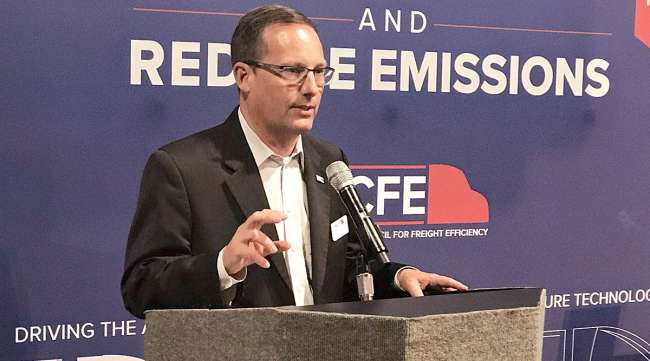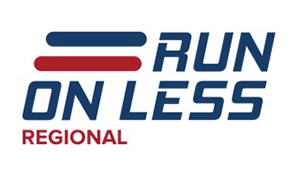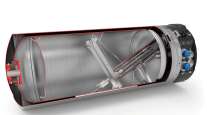Senior Reporter
NACFE Names Drivers for Regional Run on Less Showcase

[Stay on top of transportation news: Get TTNews in your inbox.]
Ten regional-haul drivers, whose experience ranges from one year to 42 years, will participate in the Regional Run on Less fuel efficiency roadshow from Oct. 7 through Oct. 25, the North American Council for Freight Efficiency announced Sept. 10.
“We are really excited about this event. Sometimes this sector is a bit hidden, but 45% of Class 8 production is for day cabs,” NACFE Executive Director Mike Roeth said. NACFE is sponsoring the event, along with Shell Lubricants and Rocky Mountain Institute.

The drivers, with their experience, company and tractor-engine:
• Louis Scaruffi, 42 years, C&S Wholesale Grocers, 2019 Volvo VNR day cab with Volvo D13 engine
• Mark Casey, 1 year, Hirschbach, 2019 Freightliner Cascadia sleeper with Detroit DD15 engine
• Glen Williams, 30 years, Hogan Transportation, 2020 International LT day cab with Cummins X15 engine
• Dustin Whitener, 11 years, J.B. Hunt, 2019 International LT sleeper with Cummins X15 engine
• Rita Bare, 20 years, Meijer, 2019 Freightliner Cascadia with Detroit DD13 engine
• Lou Martinez, 14 years, PepsiCo, 2019 Peterbilt 579 day cab with Paccar MX-11 engine
• Travis Lauer, 4 years, Ploger Transportation, 2018 Volvo VNR sleeper with Volvo D11 engine
• Michael Tam, 2 years, Schneider, 2019 Freightliner Cascadia sleeper with Detroit DD15 engine
• Beau White, 36 years, Southeastern Freight Lines, 2019 Kenworth T680 day cab with Cummins X15 engine
• Darin Salgado, 32 years, UPS, 2019 Kenworth T680 day cab with Westport 12G engine
They will drive trucks from various truck makers equipped with a variety of technologies that improve fuel efficiency.
The initial Run on Less showcase in 2017 involved seven over-the-road trucks — totaling 50,107 miles over 99 driver-days, including battles with hurricanes Harvey and Irma — and they topped the initial goal of 9 mpg by posting a final average of 10.1.
The regional run has no such goal because the conditions are too diverse, Roeth said. Some trucks are fully loaded, others not, the stops per day differ, the routes vary as do the speeds they operate at, he explained.
“It’s not in the cards; that expectation isn’t there,” Roeth said. “We’ll start seeing and measuring as the run progresses.”
Regional-haul duty cycles are very challenging, Roeth added, with routines that can involve frequent stops, the need for tight maneuverability in urban settings and drop-and hook situations that increase pre-trip inspections — all done on routes of 300 miles or less.
“It’s clear to us that these 10 fleets are giving us a glimpse into the future,” Roeth said.
“In our regional report, we talked about technologies emerging that would help organize, or marshal, freight,” he added. “The best example is relay freight [or a handoff between drivers who meet, switch trailers, then head home]. Think about the effect on the shortage of truck parking. And the drivers are getting their full hours of service.”
UPS is using compressed natural gas fuel on its out-and-back run from Phoenix to Chirico Summit, Calif. It typically costs less than diesel.
“We use a lot of fuel, and we want to do everything we can to save every bit we can,” UPS Fleet Manager Tony Coleman said.
For instance, the UPS truck has trailer skirts, low-rolling-resistance tires, cab side extenders, roof fairing, fuel tank skirts and a device called TruckWings that automatically unfolds at highway speeds to close the gap between the tractor and the trailer.
J.B. Hunt has a dedicated fleet of 55 trucks hauling for a mattress company. The driver there in the regional showcase starts out at 3 a.m. and makes three, four or six stops depending on the load, which the driver unloads.
Among other features, the truck has a composite side skirt with a second strip of more flexible plastic material along the bottom edge, which helps prevent damage to the skirt from crossing curbs or railroad tracks.
The truck also has a shorter cab-to-axle distance, which reduced the trailer gap.
“We get about a percent gain in mpg,” said Tommy Cottingham, director of maintenance equipment procurement for J.B Hunt.
Meanwhile, Southeastern Freight Lines spends about $400,000 a day on fuel.
“Just a .1 increase in fuel efficiency is worth about $2 million” per year, said Kerry Stritt, vice president of fleet services at Southeastern.
The company says the marriage between the engine and transmission is the biggest contributor to fuel efficiency. The truck in the showcase is using a Cummins X15 400 HP engine and an Eaton Smart Advantage automated manual transmission that “talk” to each other.
Other gains come from the modular decking system Southeastern can tailor itself so the average load goes up, fewer vehicles go out, mileage comes down and congestion is reduced, as is wear and tear on the vehicles.
Other fuel-saving measures the fleets use, in some combination, include: active cruise control, drive tire inflation, wide-base single tires, wheel covers, low front bumper, diesel-powered auxiliary power units and battery-powered HVAC systems.
In related news, NACFE during the run will hold three webinars on advanced technologies that eventually could play a big role at regional fleets: hydrogen, Oct. 8; connectivity, Oct. 15; and commercial battery electric vehicles, Oct. 23.




